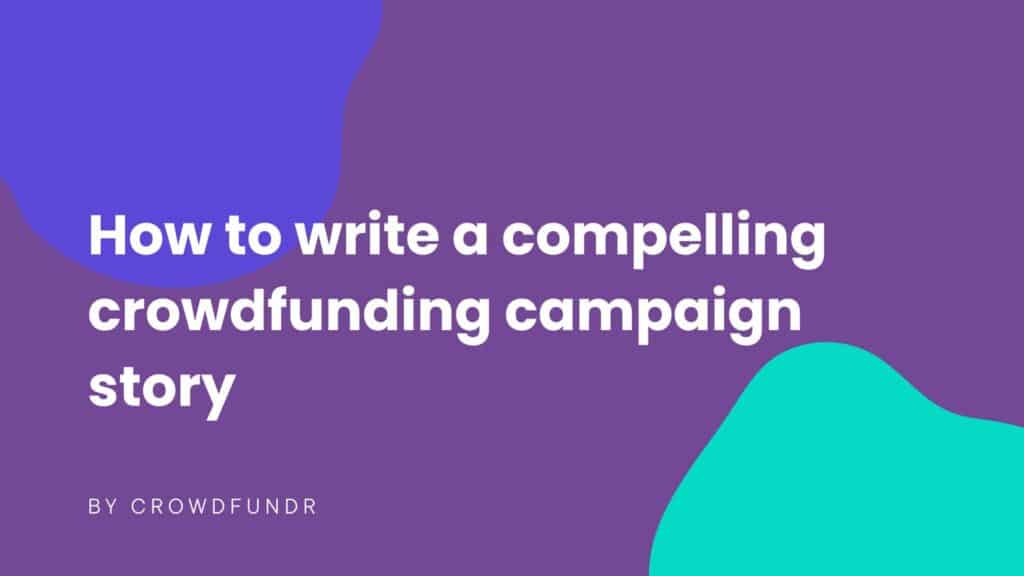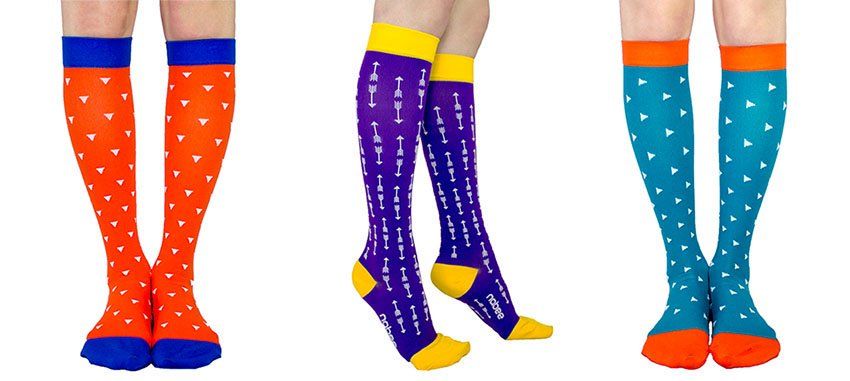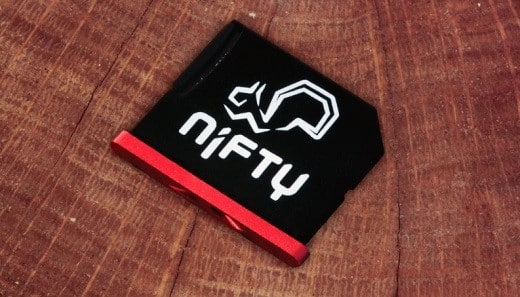Successful crowdfunding comes from putting the same effort into the campaign story as you did the project itself.
Your crowdfunding campaign story:
- Is the first impression you give potential supporters,
- Persuades readers to engage with your campaign, and
- Encourages them to share your campaign with their networks.
Without an engaging story, how will the world know about your phenomenal project? Spread your passion for this project and solidify support with a gripping narrative that grasps readers’ emotions.
Crowdfunding campaign stories and online reader behaviour
All stories target emotions. Your crowdfunding story is no different, but you only have a few seconds to grab those emotions and hold onto them.
The average internet user doesn’t read articles, they skim. They look for headings, graphics, lists, and other eye-catching content to tell them what they want to know.
Consider your behaviour when you first opened this article. Did you start reading from line one and continue word-by-word? Or was your eye drawn to the three-point list in the first section, then moved to check out more section headers?
If you said the former, you’re in the minority. Most readers will predictably glance through the headers in this article to find the pieces they’re looking for.
However, there is one major difference between this article and a crowdfunding story.
Crowdfunding stories are NOT blog articles
Advice and best practices for writing online articles are focused on search engine optimization (SEO = ranking as high as possible in online search results). Depending on the content, ideal word count for SEO purposes is around 2000 (beyond for financial articles).
But a blog article is teaching something. A crowdfunding campaign is selling something. And there’s a reason why marketing ads are brief.
“But all of the information is important!”
I’m sure it is… to you. The people you’re targeting require much less information than you think. And when someone wants further information, you’ll have links to where they can find it waiting. The core story for the project, however, must communicate only essential details.
This means you have less than 500 words to establish a strong enough connection with someone that they’ll contribute to your crowdfunding campaign.
And yes, it’s possible!
Crowdfunding campaign story elements
Opening (25 to 50 words)
Start strong with something eye-catching and relevant. It can be:
- An agreeable statement to bring the reader into your mindset,
- A rhetorical question to spur their thoughts about the problem you’re solving,
- A glowing review, award, or other accolade from a credible source (i.e. not your mom),
- Product quote or tagline.
Your opening material’s role is to prevent as many visitors from ‘bouncing’ (immediately exiting out of the campaign) as possible. You won’t catch everyone – a high percentage will click away without even scrolling. But, once you’ve hooked them, it’s easier to keep them long enough to convince them to support the campaign. So, this section, while the shortest, also requires the most consideration and creativity.
Example from The Collected Doug Wright Vol. 2 (Designed & edited by Seth)

Project background (50 to 100 words)
Provide a BRIEF background on the project. This is part of what helps readers emotionally connect with you. Why did you create this? Is it a passion project? Are you solving a problem you or someone else has?
Be real and open with your readers. Transparency enforces trust, and trust in crowdfunding is essential. In most cases, campaign supporters won’t receive their rewards (if there are any) right away, as the campaign works to raise funds to produce the project. Therefore, your supporters need to trust you.
Example from the One Tin Soldier campaign, a Burning Man art installation:

Project description (100 to 150 words)
A project description can include a variety of things, depending on what the campaign is for. Of course, you must include what the project is, relevant specs and available options, but the key is to highlight what makes your project unique.
Every project is different, which means every project brings something new and valuable. Aim for two or three important value-adds to highlight in your campaign.
Communicating that value is crucial, and doing so briefly can be difficult. Consider these questions when writing your description:
- What problem does your creation solve?
- What does it include or do that other comparable creations don’t?
- Are there components, characters, themes, or other characteristics focusing on under-represented groups or ideologies?
- Why do you believe you and your project are extraordinary?
Example from TPK Brewing and “The Blooms That Feed On Fire, A 5e adventure by Portland’s first TTRPG brewpub”

Who is going to love this project? (25 to 50 words)
Hint: The answer is NOT “everyone!”
Identifying your target audience is important for your campaign promotion as well as its story. You’re solving a problem for other people as well as yourself, so shout it out to them. What makes your project unique is what drives this specific set of people to support it.
If you haven’t yet gotten far enough in your campaign to determine your audience demographic, now is the time. Detailed descriptions are unnecessary, but here are some traits to consider when outlining who that audience might be:
- Age, gender, orientation
- Socioeconomic status
- Common pain points
- Hobbies, activities, interests
- Where do they live (geographic location and living situation)?
- When might they be most interested in this project?
- What are they passionate about?
- What similar well-known products, media, etc. might they also enjoy?
Example from “Ain’t Got Time to Die: Film Festival Run”

Outline what funds will be used for (25 to 50 words)
As supporters are pre-funding a project before it happens, they must trust you. Part of that is being open about how you arrived at your crowdfunding goal. Doing so helps supporters understand your project’s scope and likelihood of success, shows how well-planned your project and campaign are, and helps them understand the value of their contributions.
Some choose to simply list expenses, but a word-conservative and more effective way is through visual representation. Like pie charts!
Example from “Backstory One-Shot Comic by Ryan K Lindsay, Jen Vaughn, and Teo Acosta“

What is going to happen and when? (50 to 100 words)
The next thing supporters want to know is the timeline of events from the moment they contribute or claim a reward to when they receive said reward (or, to when the campaign ends and fulfills all promises if rewards aren’t a part of your campaign).
Considerations for this section are:
- What happens if you do not hit your campaign goal?
- When do you expect to ship rewards? (An approximation, such as ‘June 2024’ is acceptable)
- Do you foresee any risks or challenges?
- How will you communicate updates and changes?
Your timeline might change, even for reasons out of your control (cough-worldwidepandemic-cough). And that’s okay! Communication is key, here.
Crowdfundr provides multiple avenues to communicate with supporters, through public updates and private messaging in the communication centre.
Consider updates a required feature of your crowdfunding story. Updates aren’t only useful for communicating changes, they’re fantastic pieces of content for you and your current supporters to share and drive more contributions! This article helps explain further.
Crowdfunding story calls to action (20 words)
There are two calls to action for every crowdfunding campaign story: contribute (or claim a reward) and SHARE!
Unless you’re running a private campaign for a select group, you’ll want people to share your campaign. Even if they cannot contribute (not everyone is in a financial position to do so), they can still help support you by spreading the word.
Be direct with your ask and make it easy:
Help bring this project to life by:
- Claiming a reward.
and/or - Sharing this campaign with your network!
What about the ‘extra’ information?
Some supporters might want the nitty-gritty details you left out of your campaign story. It’s important to provide easy access to more information (like FAQs, specs, shipping information, etc.) for those who want it, without crowding your story. There are multiple places you can put these details and link to them in your story:
- Outside website
- Newsletter
- Crowdfundr user profile / Organization account profile
- Crowdfundr extra story tabs
- Downloadable files
Where are campaign rewards included?
While every platform is different, Crowdfundr was designed to highlight rewards with descriptions, images, add-ons, and variant options to exist within the reward itself. So, when it comes time to describe your rewards, a simple “Discover reward options on the right side of the campaign (for desktop) or scroll to the bottom (mobile devices),” is all you need.
Visual appeal of a crowdfunding campaign story matters!
You could have every element listed above within the suggested word count, an intriguing project, and rewards to die for… but that will all fall flat if not presented in an attractive way.
Three things will help with this:
- Headers. Remember, online readers skim. Make it easy for them by separating story elements with headers.
- Colour and font style. Highlight extra-important information with a colour and/or font change. Keep these changes minimal to keep their effect, and don’t go overboard! One or two extra colours (with the main story components in black) are more than enough, and they should align with the rest of the campaign and your brand.
- Images. Of yourself, of your project creation, of your rewards, of anything of value that attracts attention. Break up content with carefully chosen images to bring supporters closer to you and your project.
There is no single “right” way to write a crowdfunding campaign story
The points listed above for writing your story are meant to be guidelines. We at Crowdfundr have seen successful campaigns ignore most of these recommendations, but they’re not common.
If you are to take one key message away from this article, let it be to keep your campaign story short, informative, and highlighting your project’s key values.
Yours in success,
Shan Reeb, Crowdfundr
If you are interested in tabletop role-playing games, Crowdfundr is currently running the Tabletop Nonstop Spotlight. Check out amazing crowdfunding campaigns from TTRPG creators!





